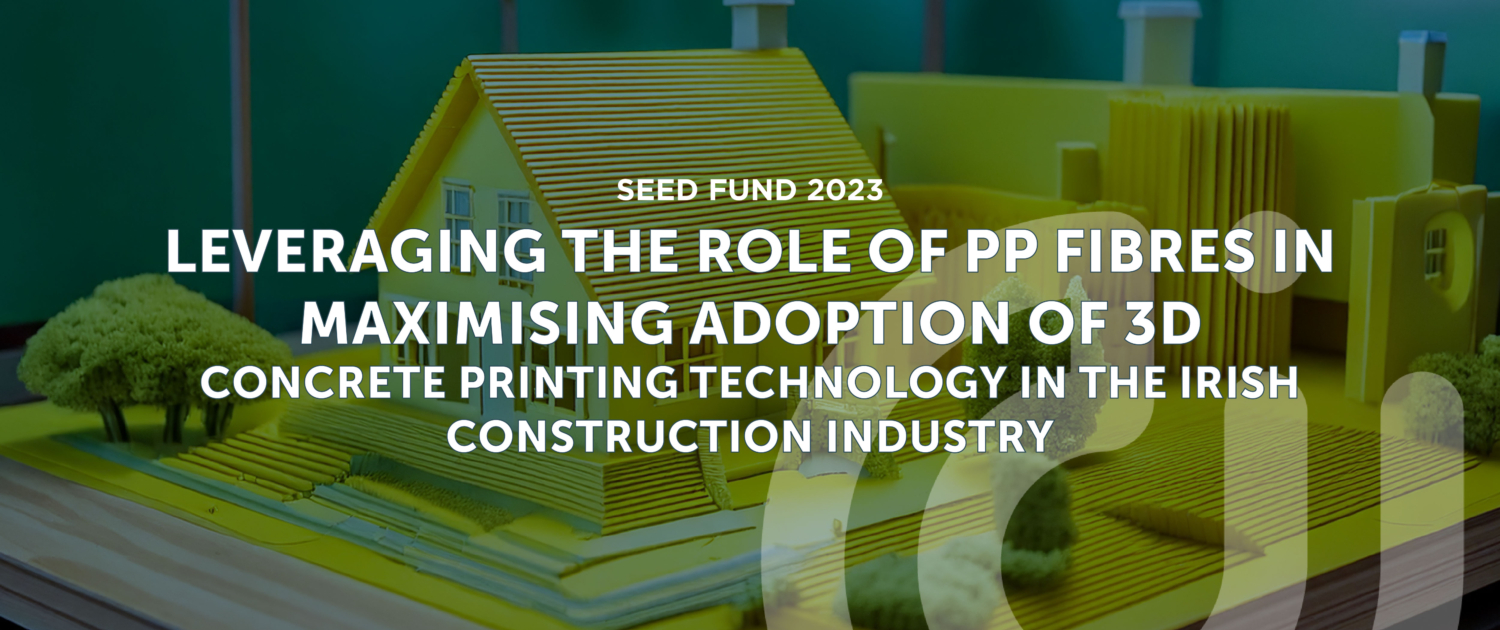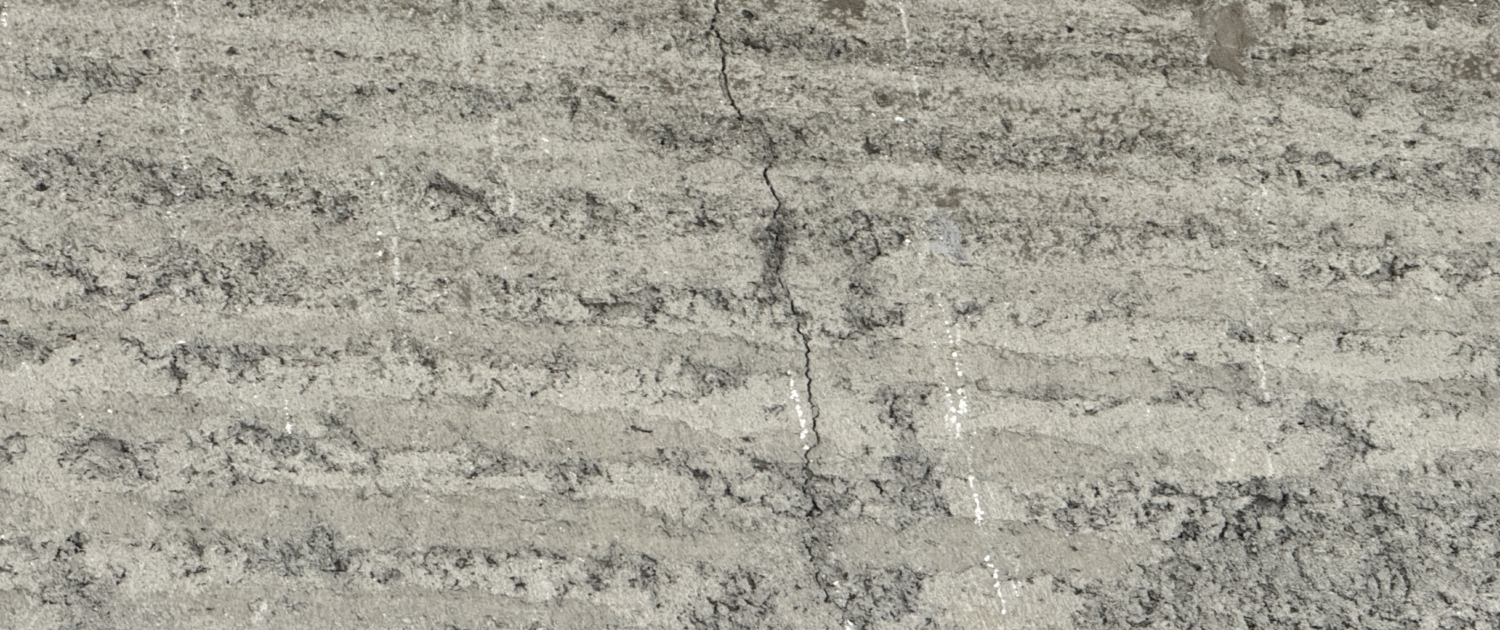Leveraging the Role of PP Fibres in Maximizing Adoption of 3D Concrete Printing Technology in the Irish Construction Industry
Project Details:
This project addresses fresh-state challenges associated with extrusion-based 3D concrete printing (3DCP), particularly issues at the nozzle caused by material shrinkage, early-age setting and hydration, printing speed, excessive layer thickness, and lack of fibre reinforcement. To overcome these limitations, the concrete mix design is being optimized by incorporating polypropylene (PP) fibres in higher dosages (0.10%, 0.15%, 0.25%, 0.30%, and 0.35%) and extended lengths (6 mm and 12 mm), beyond typical values used in conventional 3DCP.
Fresh-state performance, including rheology and slump, is being evaluated to identify combinations suitable for smooth extrusion and stable layer deposition. Hardened-state performance is assessed through compressive and flexural strength testing. The optimized mixes are expected to provide enhanced crack resistance, reduced slumping, improved structural integrity, and increased flexibility in achieving complex and customized geometries.
3D printed concrete prototype samples are being produced and evaluated using the optimized mix to demonstrate practical viability and alignment with Irish construction industry standards. By systematically examining the relationship between PP fibre parameters and printable concrete performance, this project aims to establish a robust mix design framework that supports the broader adoption of 3DCP technology in Ireland and internationally.
Completed Work:
The project has progressed through a comprehensive series of laboratory and field investigations focused on optimizing PP fibre-reinforced 3D printable concrete. At the UCD laboratory, a wide range of concrete formulations was developed by systematically varying PP fibre dosages (0.10% to 0.35%) and fibre lengths (6 mm and 12 mm). Rheological testing was conducted using a rheometer to assess fresh-state performance, which is critical for extrusion-based 3D printing. Parameters evaluated included static yield stress, dynamic yield stress, plastic viscosity, flow index (n), thixotropy value, as well as structural build-up (Rthix) and structural breakdown rates (Athix). These properties provided insight into pumpability, extrudability, and buildability, ensuring that the material could be smoothly extruded while maintaining its shape during printing.
Following rheological optimization, small-scale mechanical testing was conducted to evaluate compressive and flexural strength. The selected mixes were then used to produce conventional cast specimens and 3D printed elements with one, two, and three layers at HTL’s R&D facility. All printed samples were labelled and oriented according to their print direction. Mechanical performance was assessed at UCD through compressive and flexural strength testing at various curing ages. These tests followed standardized procedures and enabled comparison between printed and cast specimens. The influence of fibre content, fibre length, number of printed layers, and loading direction was analyzed to study interlayer bonding and anisotropy in printed concrete.
Results showed that mechanical performance improved significantly with optimized fibre combinations, especially in multi-layer printed samples, demonstrating better crack control and structural capacity. Currently, 3D printed sample testing is ongoing at HTL’s R&D facility. 3D concrete elements are being printed using the optimized PP fibre-reinforced mix under practical conditions. These prototypes are being evaluated for print quality, dimensional stability, interlayer adhesion, and structural robustness. This ongoing work is essential to validate laboratory results in real-world conditions and to demonstrate the scalability of the mix for broader application in the Irish construction sector.
Next Steps:
The project is now in its final phase, with trial mixes currently being conducted at HTL’s R&D facility to validate the optimized PP fibre-reinforced 3D concrete mix under field conditions. These industry-scale trials will be completed soon, followed by detailed mechanical testing to assess the structural performance of the printed elements at UCD. In the final stage, the printed components will undergo advanced mechanical evaluations to ensure they meet commercial performance requirements. These efforts will help demonstrate the reliability of the developed mix and maximise the adoption of PP fibre-reinforced 3D concrete printing technology within the Irish construction industry.
Dr. Mehran Khan and Dr. Ciaran McNally – University College Dublin
Collaborators:
Harcourt Technologies Ltd (HTL)
Collaborators
Principal Investigators

Dr. Mehran Khan
Assistant Professor at University College Dublin
Dr. Mehran Khan is currently an Assistant Professor at University College Dublin, Ireland. His research focuses on sustainable construction materials, including 3D-printed concrete, low-carbon concrete, fiber reinforced concrete and its mechanical performance, fracture characteristics, durability, fire resistance, cracking behavior, and compressive modeling of hybrid fiber-reinforced concrete. He serves as Principal Investigator (PI) on multiple academic and industry projects related to sustainable construction. He holds various editorial roles, including Associate Editor, Guest Editor, and Editorial Board Member of several SCI journals. Additionally, he has participated in international conferences as a Speaker and Technical Committee Member.

Dr. Ciaran McNally
Associate Professor at University College Dublin
Dr Ciaran McNally is a civil engineer and obtained his PhD in 2001 for his work on alkali aggregate reaction in Irish concretes. Subsequent to that he joined the Centre for Materials and Manufacturing in UCD, where he worked as a research engineer, covering materials research, product development, process certification and technology transfer to industry. He is currently a lecturer in the School of Civil Engineering and in 2015 obtained a Professional Diploma in Teaching and Learning. To date Dr McNally has won over 2 million Euro in research funding. He has coordinated both European and national projects, including the 3.2 million Euro Marie Curie Initial Training Network TEAM (grant no 238648). His research covers a wide array of materials, including concrete, asphalt and FRP. In recent years he has extended this to include digital design and optimisation. To date, he has published over 100 peer reviewed papers.

Dr. Wen Si
Postdoctoral Research Fellow at University College Dublin
Dr. Wen Si is a Postdoctoral Research Fellow at University College Dublin, working within Assoc Prof. Ciaran McNally’s research team. Her research focuses on advancing 3D concrete printing by incorporating various fibres to improve printability and structural integrity, supporting the adoption of this technology in the Irish construction industry. She completed her PhD in Materials Science at Dalian University of Technology in 2023, investigating the properties and microstructure of fibre-reinforced cementitious composites. In 2024, she held a research position at RMIT University, Australia, where she explored design optimization and modelling for high-performance 3D-printed concrete. Dr. Wen’s expertise spans rheology, fibre-reinforced composites and the integration of digital construction methods with advanced, low carbon material systems. She has contributed to several international research projects funded by the National Natural Science Foundation of China and has published in leading journals such as Cement and Concrete Composites, Construction and Building Materials and Nature Communications. Her work combines materials innovation with process optimization, including rheological evaluation, fibre alignment analysis and microstructural characterization, to develop resilient and environmentally sustainable 3D printable construction materials.








